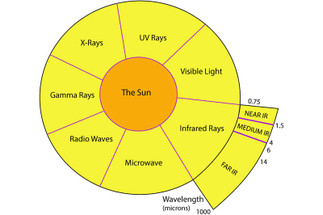Posted by BiomatStores.com on 2nd Aug 2025
Far Infrared Light Therapy vs. Red Light Therapy: What’s the Difference and Which One Works Best?
In the booming world of wellness tech, two light-based therapies have gained enormous attention: Far Infrared Light Therapy and Red Light Therapy. Both are celebrated for their wide range of health benefits—from pain relief and skin health to detoxification and inflammation reduction—but they are often misunderstood or lumped together under the same umbrella.
This comprehensive guide will break down the differences between red light therapy and far infrared therapy, explore how each one works, and help you decide which is better for your needs. Whether you're looking for natural pain relief, muscle recovery, or a non-invasive skin rejuvenation solution, understanding these light therapies can empower you to make the right choice.
What Is Light Therapy?
Light therapy (also known as photobiomodulation) is the use of specific light wavelengths to stimulate biological processes in the body. Different wavelengths penetrate the skin and tissues at varying depths, triggering unique responses.
The most common types include:
-
Red Light Therapy (RLT) – Uses red and near-infrared (NIR) wavelengths
-
Far Infrared Therapy (FIR) – Uses longer, invisible wavelengths of infrared light
While both therapies are non-invasive, drug-free, and generally safe, they offer distinct benefits due to their different wavelengths and mechanisms of action.
What Is Red Light Therapy?
Red Light Therapy Explained
Red light therapy uses light wavelengths in the 620 nm to 850 nm range, encompassing both visible red light and near-infrared light.
This therapy is absorbed by the mitochondria—the powerhouse of your cells—boosting the production of adenosine triphosphate (ATP), the energy currency of cells. This cellular energy fuels regeneration and repair.
How Red Light Therapy Works
Red light and near-infrared light stimulate a biological process known as photobiomodulation:
-
Light penetrates up to 1.5–2 inches into the body
-
It interacts with cytochrome c oxidase in mitochondria
-
This boosts ATP production, reduces oxidative stress, and promotes cellular repair
Red Light Therapy Benefits
-
Anti-aging & skin rejuvenation (reduces fine lines, wrinkles, and age spots)
-
Hair regrowth stimulation
-
Improved wound healing
-
Mood enhancement (sometimes used for Seasonal Affective Disorder)
-
Sleep support (by regulating circadian rhythms)
Common Red Light Therapy Devices
-
LED light therapy panels
-
Red light therapy face masks
-
Handheld LED therapy devices
-
Near-infrared light therapy belts and wraps
These are often used in clinical settings, gyms, and increasingly at home for convenience.

What Is Far Infrared Light Therapy?
Far Infrared Therapy Explained
Far infrared light therapy uses wavelengths between 3,000 nm and 100,000 nm, which fall outside the visible light spectrum. Unlike red light therapy, which is based on light absorption in the cells, far infrared therapy works through radiant heat.
How Far Infrared Therapy Works
FIR therapy heats the body from the inside out using deep-penetrating thermal radiation. These wavelengths:
-
Are absorbed by water molecules in the body
-
Increase molecular vibration
-
Generate gentle heat
-
Promote circulation, pain relief, and relaxation
It’s essentially a high-tech version of heat therapy, delivering warmth more deeply and evenly than traditional methods.
Far Infrared Therapy Benefits
-
Pain relief for muscles and joints
-
Improved blood circulation
-
Reduced inflammation and stiffness
-
Help with occasional sleeplessness
-
Stress relief
-
Muscle relaxation
Common FIR Devices
-
Infrared saunas
-
FIR heating pads and blankets
-
Infrared therapy mats (e.g., Amethyst or Jade mats, the Richway Biomat)
-
FIR dome devices
Most users enjoy FIR therapy for its comforting warmth and spa-like relaxation benefits.
Red Light Therapy vs. Far Infrared Therapy: Key Differences
To make the decision easier, here’s a clear side-by-side comparison:
| Feature | Red Light Therapy | Far Infrared Therapy |
|---|---|---|
| Wavelength | 620–850 nm | 3,000–100,000 nm |
| Light Visibility | Visible and near-infrared | Invisible |
| Mechanism of Action | Photobiomodulation | Thermal radiation (heat) |
| Depth of Penetration | Up to 2 inches | 6-8 inches |
| Biological Target | Mitochondria in cells | Water molecules in tissues |
| Primary Benefit | Cell regeneration & energy production | Deep tissue heat for relaxation & circulation |
| Best For | Skin health, inflammation, energy | Muscle tension, chronic pain |
| Delivery Methods | LED panels, wands, masks | Saunas, mats (Richway Biomats), heating pads |
| Sensation | Mild warmth or neutral | Noticeable heat |

Which One Is Better for Your Needs?
Your wellness goals will determine which therapy is more suitable. Here's a quick guide to help you decide:
Choose Red Light Therapy if you:
-
Want to stimulate collagen for firmer, healthier skin
-
Have acne scars, wounds, or sun damage
Choose Far Infrared Therapy if you:
-
Experience muscle tightness, increased circulation, or arthritis
-
Suffer from joint pain
-
Need to relieve stress and promote deep relaxation
-
Struggle with circulation problems or cold extremities
Can You Use Red Light Therapy and Far Infrared Therapy Together?
Absolutely. In fact, combining red light and far infrared therapy is becoming increasingly common in clinics and home-use devices. Many modern infrared saunas are now equipped with near-infrared and red LED lights to offer a dual therapy experience.
Benefits of Combination Therapy:
-
Red light therapy regenerates tissues and reduces inflammation
-
FIR therapy relaxes muscles and improves circulation
-
Together, they maximize pain relief, healing, and recovery
This synergistic approach is especially helpful for chronic pain sufferers, athletes, and those seeking full-body wellness.
Are These Therapies Safe?
Both red light and far infrared light therapies are considered very safe for regular use, especially when high-quality devices are used correctly.
Red Light Therapy Safety Tips:
-
Avoid staring directly into LED lights—wear protective eyewear when needed
-
Limit sessions to 10–20 minutes per area
-
Monitor for mild skin redness or sensitivity at high intensities
Far Infrared Therapy Safety Tips:
-
Stay hydrated, especially during sauna sessions
-
Don’t use FIR saunas if you have heat-sensitive conditions (e.g., MS, cardiovascular issues) without consulting a doctor
-
Avoid overheating—start with short sessions and increase gradually
How to Choose the Right Light Therapy Device
Whether you’re looking for a red light therapy panel or a far infrared heating mat, here are some tips for buying a safe, effective product:
For Red Light Therapy:
-
Look for wavelengths between 630–660 nm (red) and 800–850 nm (NIR)
-
Choose FDA-cleared or clinically backed brands
-
Prioritize LED quality and power output
-
Ensure sufficient coverage area for your needs
For Far Infrared Therapy:
-
Look for low EMF output for safety
-
Materials should be non-toxic and durable
-
Seek adjustable temperature settings and automatic timers
-
If it’s a mat, consider natural crystal inserts for enhanced grounding
Final Thoughts: Which Light Therapy Is Right for You?
Red light therapy and far infrared therapy are not competing modalities—they are complementary tools in the modern wellness toolkit. Choosing the right one depends on your specific health goals, budget, and personal preferences.
If you're after cellular repair, energy production, or skin regeneration, go with red light therapy. If you’re seeking deep muscle relaxation, pain relief, and thermal comfort, far infrared therapy will likely be more satisfying.
For many, the ideal setup includes both therapies, either in separate devices or combined solutions, delivering a total-body healing experience.
Frequently Asked Questions (FAQ)
Q: Is red light therapy better than far infrared for arthritis?
A: FIR provides the best relief. For arthritis, the Richway Biomat is FDA approved.
Q: Does far infrared therapy cause sweating like a sauna?
A: Yes, far infrared saunas and mats can induce sweating.
Q: Can I do red light therapy every day?
A: Yes, red light therapy is safe for daily use, usually 10–20 minutes per treatment area.
Q: Will I feel heat with red light therapy?
A: Not typically. While NIR light may produce a mild warming sensation, red light therapy doesn’t generate heat like FIR does.

